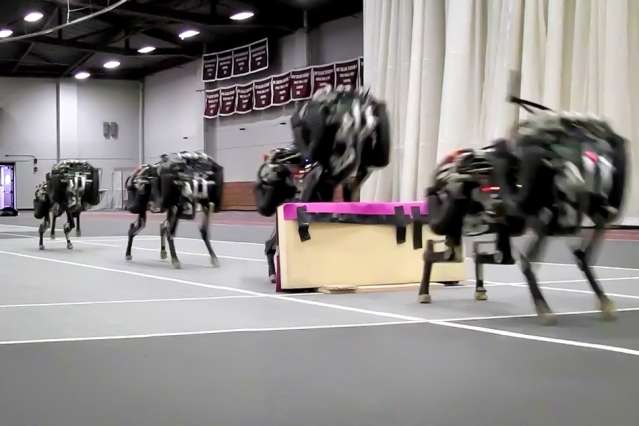

Some of you might remember seeing the (somewhat terrifying) video of one of the world’s first fully-functional, four-legged robots we posted about not too long ago. Or you may remember another post about MIT’s tiny transformer robot. Now, there is a new robot in our midst, one that is even more advanced. While conducting research on robots that could be used in military endeavors, MIT researchers created a robotic cheetah that is able to jump over hurdles as it runs, which makes it the first four-legged robot to accomplish the feat autonomously.
Ultimately, the scientists spent some five years developing the battery-powered robot, which is sturdy on its feet and capable of running as fast as a human being. Now, they are trying to give it even more abilities in order to assist with more practical applications.
Previous models were virtually (well, totally) blind. They used an IMU (internal measurement unit) with an accelerometer and a gyroscope in order to maintain balance. This tech allowed the devices to determine how much force was necessary in order to account for (and correct for) any changes in the terrain being traversed.
However, the new robot takes things to a new level. It weighs in at nearly 70 pounds (31 kg), and it is able to clear objects placed before it by estimating the height, size, and distance of objects in its path. Thanks to these updates, it is able to use its lasers in order to map terrain and alter its approach to complete jumps.
After a number of trials, the researchers were able to give the robot the time necessary to analyze data, prepare for the jump, and safely secure the landing. Notably, it does all of this without slowing down. In fact, the entire process takes only 100 milliseconds to complete
Of course, accomplishing this feat required rather complex mathematics and algorithms (which are explained in the videos below).
“It’s the first legged robot to be able leap hurdles like this autonomously. Many other robots can move faster on wheels, or maybe jump higher, but they can’t do it on their own,” says team leader Sangbae Kim. “You have to manage balance and energy, and be able to handle impact after landing. Our robot is specifically designed for those highly dynamic behaviors.” However, there is still work to be done. In the trial runs, the robot was able to successfully complete 90% of the hurdles on the indoor track, yet it only made 70% on the treadmill.
The robot comes with 12 electric motors and 3D-printed legs. Much of the funding comes from DARPA (a branch of the Department of Defense), who hopes to create military robots that are capable of carrying various materials over long, complicated distances quietly. This robot could be used to assist soldiers transporting heavy materials, but it could also be used in other kinds of missions (its applications haven’t been determined as research is still ongoing).
Of course, that is still some ways off. A lot more research and work will be needed until we have robotic soldiers (or soldiers’ companions), but if you just had a horrifying vision of one of these things walking up to you with a bomb strapped to its back, you’re not alone…
Watch: The Jumping Robot

Watch: All About the Cheetah Bot

From Quarks to Quasars is two people, Jaime and Jolene. We want to make the world a more sciencey place. We’re doing that, but with your help, we can do even more.
FQTQ takes a lot of time, money, and effort. Here, you can support us, get to know us, and access extra content: